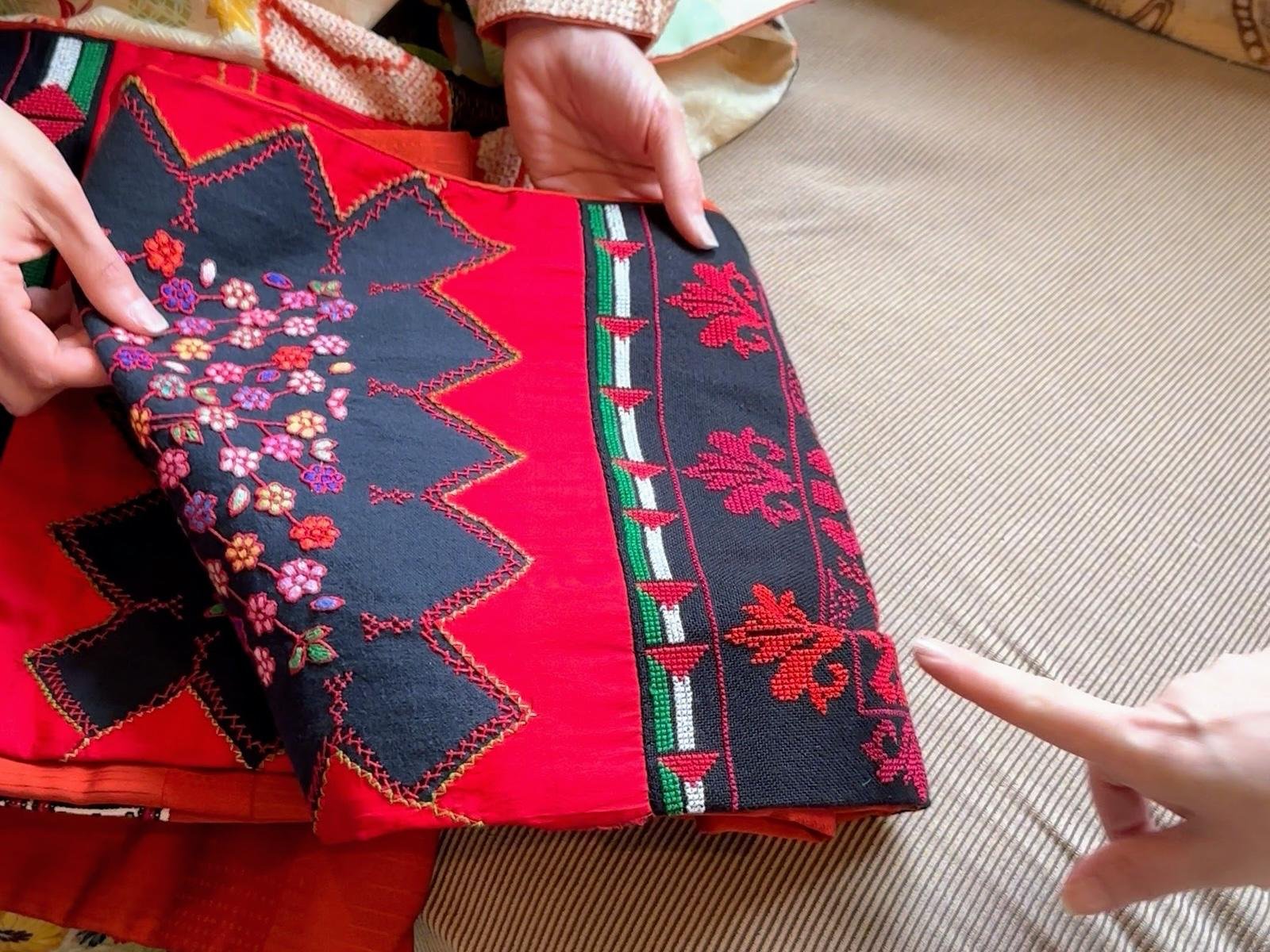Threads of Solidarity: When Tatreez Met the Kimono
A Journey Through Japan, and a Story That Stitched Itself Into My Heart
While traveling through Japan, I encountered one of the most moving collaborations I've ever seen—one that blended art, resistance, and cultural connection in a way I’ll never forget.
In Kyoto, I met a Japanese woman who had visited Palestine years earlier. What she saw—life under occupation—changed the course of her life. It wasn’t just what she witnessed, but how deeply it stayed with her. She didn’t become an activist in the traditional sense. Instead, she dedicated all of her time towards a tender, intentional offering through textiles.
Who Is Behind This Project?
After returning to Japan, Maki-San launched the パレスチナ刺繍帯プロジェクト (Palestinian Embroidered Belt) project rooted in solidarity: partnering with Sulafa, a non-profit embroidery initiative in Gaza run by UNRWA since 1950. Sulafa employs Palestinian women, offering not just income but a connection to heritage through the art of tatreez.
Through this partnership, traditional Palestinian motifs are now hand-stitched by Sulafa artisans onto obis, the wide sashes worn around kimonos. The result? A cultural hybrid that honors both traditions while offering a powerful act of resistance and beauty.
What Is Tatreez?
Tatreez is traditional Palestinian embroidery, passed down through generations of women. Each motif tells a story—of place, lineage, love, struggle, or resistance. Tatreez has often been confined to the thobe, the traditional Palestinian dress. But this project challenges that limitation, reimagining how tatreez can live and evolve.
Wearing the Obi: A Personal Reflection
When I wore one of these obis, wrapped around a beautifully styled kimono, I felt something shift. The fabric carried weight—not just in texture, but in meaning. It was a literal and metaphorical layering of histories, woven together with care and purpose.
This wasn’t cultural appropriation. It was cultural collaboration—crafted through deep respect and relationship.
Why It Matters: Tatreez as a Tool for Decolonization
Tatreez is not static. It’s alive. And when paired with other traditions held with care, it can become a thread that connects struggles, celebrates survival, and weaves shared futures. This project is proof of that.
It’s also a reminder that resistance can take many forms. Sometimes, it looks like stitches across continents. Sometimes, it looks like a kimono wrapped in Palestinian memory.
Learn More
Follow along this cross-cultural project
Learn more about Sulafa Embroidery
Support Palestinian makers and educators who preserve these traditions



